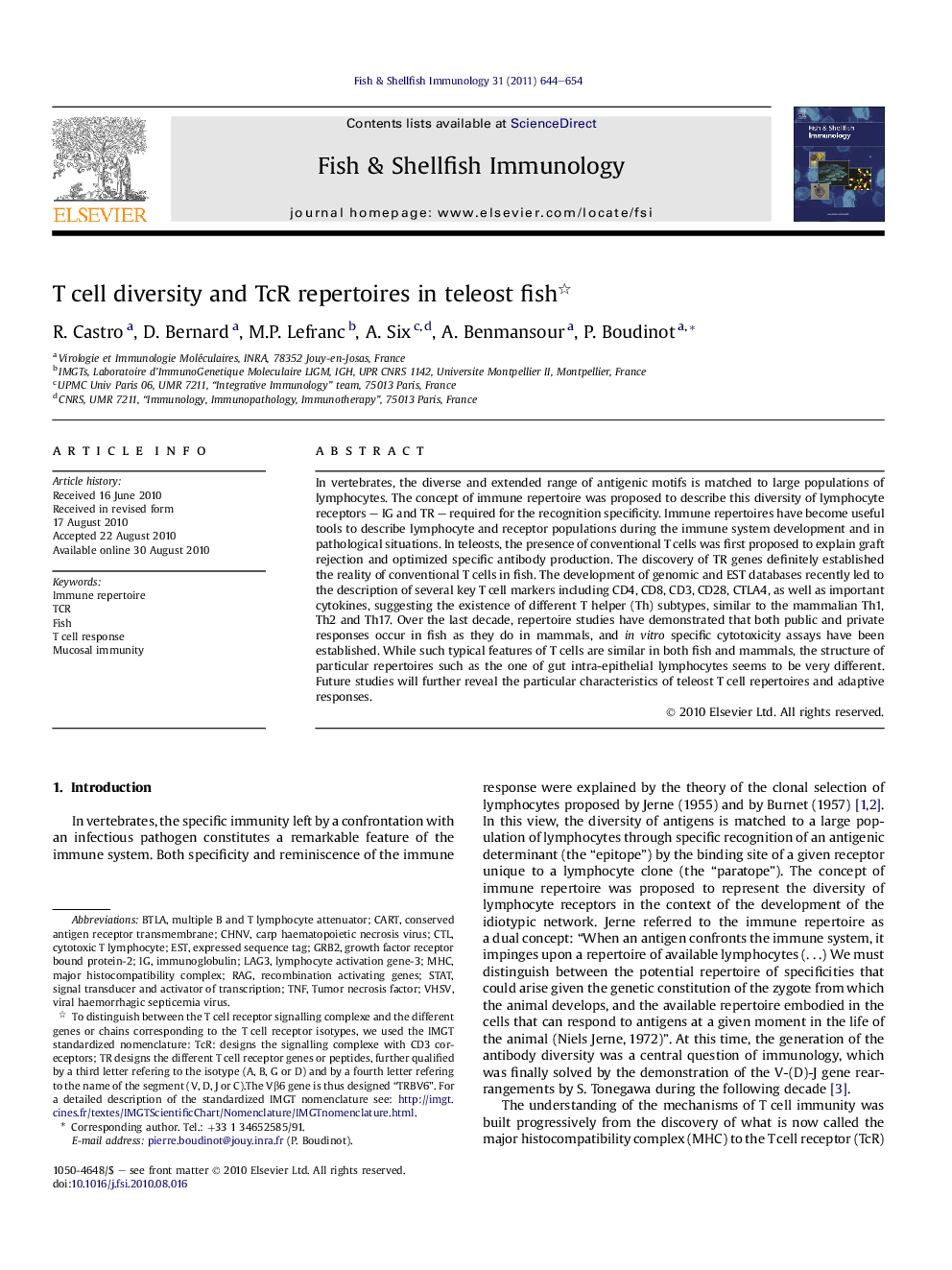| Article ID | Journal | Published Year | Pages | File Type |
|---|---|---|---|---|
| 2432023 | Fish & Shellfish Immunology | 2011 | 11 Pages |
In vertebrates, the diverse and extended range of antigenic motifs is matched to large populations of lymphocytes. The concept of immune repertoire was proposed to describe this diversity of lymphocyte receptors – IG and TR – required for the recognition specificity. Immune repertoires have become useful tools to describe lymphocyte and receptor populations during the immune system development and in pathological situations. In teleosts, the presence of conventional T cells was first proposed to explain graft rejection and optimized specific antibody production. The discovery of TR genes definitely established the reality of conventional T cells in fish. The development of genomic and EST databases recently led to the description of several key T cell markers including CD4, CD8, CD3, CD28, CTLA4, as well as important cytokines, suggesting the existence of different T helper (Th) subtypes, similar to the mammalian Th1, Th2 and Th17. Over the last decade, repertoire studies have demonstrated that both public and private responses occur in fish as they do in mammals, and in vitro specific cytotoxicity assays have been established. While such typical features of T cells are similar in both fish and mammals, the structure of particular repertoires such as the one of gut intra-epithelial lymphocytes seems to be very different. Future studies will further reveal the particular characteristics of teleost T cell repertoires and adaptive responses.
